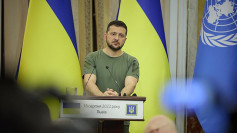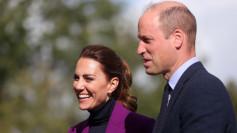A new artificial intelligence (AI) program up for development by the U.S. Defense Advanced Research Projects Agency (DARPA) aims to better comprehend world events. It also wants to specifically uncover complex events found in multimedia information and bring them to the attention of users such as the U.S. military.
The DARPA program called "Knowledge-directed Artificial Intelligence Reasoning Over Schemas" (KAIROS) will enable the U.S. Department of Defense to better understand and predict world events that could lead to chaos or unrest.
KAIROS will use "schema-based AI" to, as DARPA tells it, "understand complex events described in multimedia input by developing a semi-automated system that identifies, links, and temporally sequences their subsidiary elements, identifying the participants of the complex events and the subsidiary elements, and identifying the complex event type."
In this context, DARPA defines an event "as a recognizable and significant change in either the natural world or human society." It said events of interest either create changes that have a significant impact on national security or participate in causal chains that produce such impacts.
Schemas are units of knowledge people reference to make sense of events by organizing them into commonly occurring narrative structures, according to DARPA.
DARPA wants to develop a schema-based AI that can "enable contextual and temporal reasoning about complex real-world events in order to generate an actionable understanding of these events and predict how they will unfold."
KAIROS seeks to develop a schema-based AI capability to enable contextual and temporal reasoning about complex real-world events. The aim is to generate an actionable understanding of these events and predict how they will unfold.
KAIROS aims to develop a semi-automated system capable of identifying and drawing correlations between seemingly unrelated events or data, helping to inform or create broad narratives about the world around us.
"The process of uncovering relevant connections across mountains of information and the static elements that they underlie requires temporal information and event patterns, which can be difficult to capture at scale with currently available tools and systems," said Dr. Boyan Onyshkevych, a program manager in DARPA's Information Innovation Office (I2O).
The use of schemas to help draw correlations across information isn't new. Schemas were first defined by cognitive scientist Jean Piaget in 1923.
An example of a schema: a trip to the grocery store typically involves a purchase transaction schema, which is defined by a set of actions (payment); roles (buyer, seller) and temporal constraints (items are scanned and then payment is exchanged).
DARPA is soliciting proposals to develop a semi-automated schema system that can identify and draw correlations between seemingly unrelated events.






